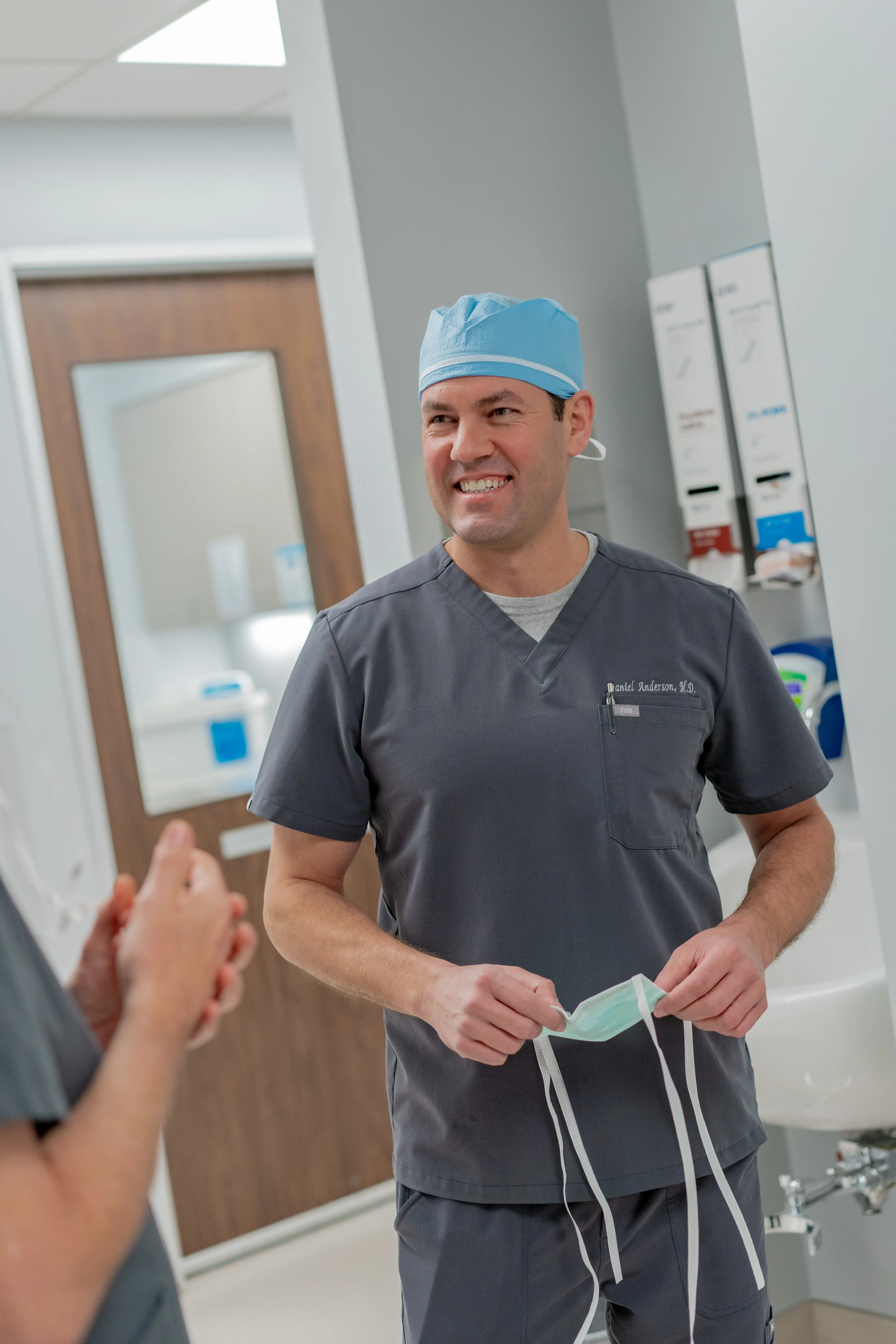PRK Eye Surgery: Frequently Asked Questions
Considering PRK (Photorefractive Keratectomy) in Houston? Making an informed decision about your vision correction is important, and you likely have questions. The experienced team at Berkeley Eye Center has compiled answers to some of the most common questions patients ask about the PRK procedure, recovery, cost, results, and how it compares to LASIK.
Read through the FAQs below. If you have additional questions, please don’t hesitate to schedule your free consultation to discuss them with us directly.
On This Page
About the PRK Procedure
How does PRK work?
PRK is a laser eye surgery that corrects vision by reshaping the surface of the cornea. First, the thin outer layer (epithelium) is gently removed. Then, an advanced excimer laser, guided by precise measurements (often using Wavefront technology), reshapes the underlying corneal tissue to correct nearsightedness, farsightedness, or astigmatism. A protective bandage contact lens is placed on the eye while the epithelium heals over several days.
Is PRK surgery painful?
The procedure itself is not painful because powerful numbing eye drops are used. You might feel some pressure. During the first few days of recovery, as the epithelium heals, discomfort is common and can range from mild scratchiness to more significant irritation, burning, watering, and light sensitivity. This is managed effectively with prescribed pain medication, lubricating drops, and the bandage contact lens. Most significant discomfort subsides after the first 2-4 days.
How long does the PRK procedure take?
Similar to LASIK, the actual laser treatment time is very quick, usually less than a minute per eye. The entire process in the laser suite, including preparation and epithelium removal, takes slightly longer than LASIK but is still typically completed efficiently. Expect to be at the surgery center for a couple of hours total on the day of the procedure.
Recovery & Results
How long is the PRK recovery time?
PRK recovery is longer initially than LASIK due to epithelial healing.
* Initial Healing/Discomfort: First 3-5 days.
* Functional Vision/Driving: Often around 1 week (varies).
* Vision Stabilization: Continues improving over weeks; final, stable sharpest vision can take 3-6 months.
* Following your post-op instructions and drop schedule is crucial.
When can I drive after PRK?
Most patients can resume driving about one week after PRK, but this depends entirely on when your vision clears sufficiently for you to feel safe and comfortable driving, both day and night. Always follow your surgeon’s specific advice and legal requirements.
How long do PRK results last? Is it permanent?
Yes, like LASIK, PRK permanently reshapes the cornea. The vision correction achieved is generally stable and long-lasting. However, PRK does not prevent natural age-related changes like presbyopia (requiring reading glasses after 40) or cataracts.
What is the success rate of PRK?
PRK has a very high success rate, comparable to LASIK when performed on appropriate candidates by experienced surgeons using modern technology. The vast majority of patients achieve significantly improved vision, often 20/20 or better, and are highly satisfied with their results reducing or eliminating their need for glasses/contacts.
Safety, Risks & Side Effects
Is PRK safe? What are the risks?
PRK is considered a very safe and effective procedure with decades of clinical use. Because it avoids creating a corneal flap, it eliminates any potential flap-related complications associated with LASIK. However, all surgery carries potential risks, although serious complications with PRK are rare. Potential risks/side effects include:
* Initial discomfort during healing (more than LASIK).
* Longer visual recovery period initially.
* Risk of infection (minimized with antibiotic drops).
* Corneal haze (usually temporary and mild with modern techniques/drops, but can rarely be more significant).
* Temporary dry eye symptoms.
* Night vision issues (glare/halos, usually temporary).
* Under/overcorrection (may require enhancement).
* Your surgeon will discuss risks thoroughly during your consultation.
Are there side effects after PRK surgery?
Common temporary side effects during the initial recovery include light sensitivity, watery eyes, scratchy/burning sensation, fluctuating/blurry vision, and potential night glare/halos. These typically improve significantly after the first week and continue to diminish as the eye fully heals over subsequent months. Dry eye can also occur temporarily.
Cost & Insurance
How much does PRK eye surgery cost in Houston?
The cost of PRK at Berkeley Eye Center is generally comparable to our cost for LASIK. We prioritize value, incorporating advanced technology and experienced surgeons into our pricing. A personalized quote is provided after your free consultation.
Does insurance cover PRK?
Like LASIK, PRK is typically considered an elective procedure by most medical and vision insurance plans and is usually not a covered benefit. However, some vision plans might offer a member discount. You can also use funds from your FSA or HSA to pay for PRK with pre-tax dollars.
PRK vs. LASIK
What’s the main difference between PRK and LASIK again?
The core difference is the corneal flap. LASIK creates a flap to access underlying tissue for laser treatment. PRK treats the corneal surface directly after removing the thin outer layer (epithelium), avoiding a flap altogether. This primarily affects the initial recovery time and comfort level.
Is PRK better than LASIK, or vice versa?
Neither is universally “better.” The best procedure depends on your individual eye health (especially corneal thickness), prescription, lifestyle, and recovery preferences. Both offer excellent long-term visual outcomes when performed appropriately. PRK is often preferred for thinner corneas or specific professions. LASIK offers faster recovery.

Have Additional Questions About PRK?
Our knowledgeable team is here to help. Schedule a free, no-obligation consultation to discuss PRK and other vision correction options.
